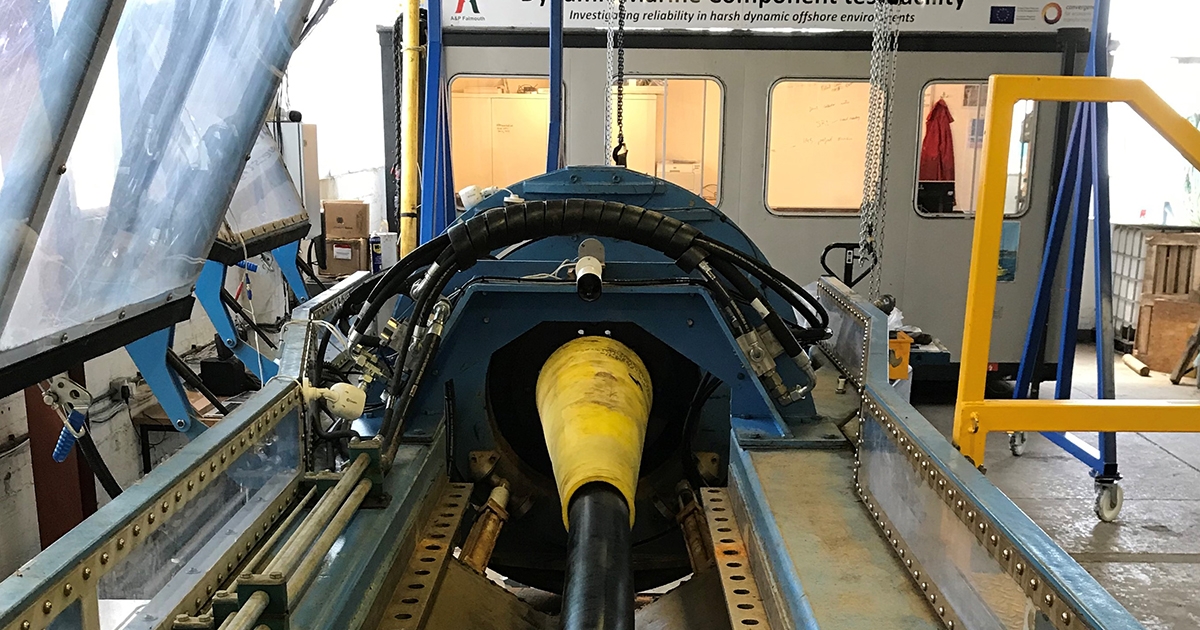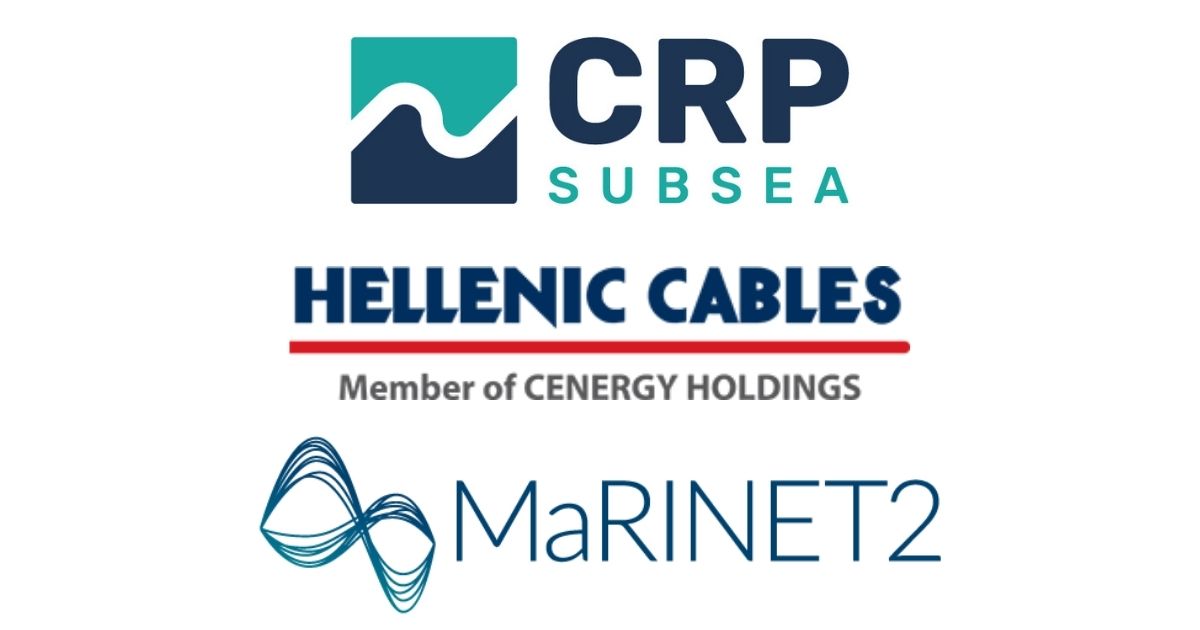CRP Subsea’s Bend Stiffener Prolongs the Fatigue Life of a Power Cable

CRP Subsea and Hellenic Cables have completed dynamic cable testing at the University of Exeter, as part of the EU-funded MaRINET2 research programme. The results show that when tested with a CRP Subsea Bend Stiffener (protecting it against overbending) the power cable survived 3.7 times as many cycles and was on average 72.5% stiffer than the power cable alone. These results highlight the importance of a Bend Stiffener’s presence to extend the fatigue life of the system to be used in future Floating Offshore Wind (FOW) applications.
 CRP Subsea and Hellenic Cables collaborated to jointly apply for the MaRINET2 programme, as both companies are looking to increase the lifespan of dynamic subsea cables. The testing at the University of Exeter used a dynamic cable designed and manufactured by Hellenic Cables and a Bend Stiffener designed and manufactured by CRP Subsea. The power cable (only) and power cable with Bend Stiffener were individually tested to compare both performance and fatigue.
CRP Subsea and Hellenic Cables collaborated to jointly apply for the MaRINET2 programme, as both companies are looking to increase the lifespan of dynamic subsea cables. The testing at the University of Exeter used a dynamic cable designed and manufactured by Hellenic Cables and a Bend Stiffener designed and manufactured by CRP Subsea. The power cable (only) and power cable with Bend Stiffener were individually tested to compare both performance and fatigue.
John Duggan, Principal Design Engineer at CRP Subsea, states: “These results are encouraging but expected and explain why the use of a CRP Subsea Bend Stiffener in such a system is critical. The CRP Subsea Bend Stiffener material has undergone an extensive and rigorous material qualification. This along with the comprehensive design methodology, manufacturing, and quality systems have been fully reviewed and approved by Lloyds Register. Our Bend Stiffener is designed to maintain a cable or flexible pipe above a given minimum bend radius in a dynamic application. This, in turn, increases the life of the product by protecting it against damage and fatigue, which can result due to over bending.” John Duggan, added, “It is imperative that we use our 25+ years’ experience of supplying Bend Stiffeners to all the major oil and gas manufacturers, without any failures in service, to support dynamic cable protection for FOW.”
George Georgallis, Head of R&D and Cable Engineering for Hellenic Cables commented: “At Hellenic Cables we are always looking forward in collaborating with industrial and academic partners involved in the offshore industry to promote and validate innovative concepts. The positive outcome of the fatigue test of a dynamic power cable coupled with a bend stiffener at the Exeter DMaC facility is very encouraging.”
The study is related to one of the key challenges for Floating Offshore Wind (FOW) developers, which is to ensure the long-term integrity of the dynamic cable, connecting the floating platform to the Offshore Sub-Station. Whilst dynamic cable assemblies are recognised as a key technical risk, the sector is not at a commercial scale yet, this funded research and development support is required to demonstrate and enhance dynamic cable solutions for FOW.
Professor Lars Johanning, Project Lead at the University of Exeter, explains: “Floating offshore wind power will be a vital component in achieving global Net Zero targets. It will also have a profound effect on the economy in Europe and globally, creating new jobs in the supply chain and providing a key component for the post-pandemic green recovery. We are extremely excited working with innovative companies in the development of subsystems for the floating offshore industry.”
The University of Exeter performed two tests. Firstly, the performance characterisation tests that involved bending the cable to a 3.7° angle at the headstock whilst holding a constant force of 40 kN, 60 kN and 80 kN at the tailstock at a 10s cycle period. Secondly, the fatigue testing involved bending the cable to 4° whilst holding a constant force of 80 kN. The cycle period was steadily decreased from 10s to 1s (to minimise overall test duration). The test plan was identical between the power cable (only) and the power cable with bend stiffener combination (including the change in cycle period).
Bend Stiffeners are used to protect cables and flexible pipelines from over bending at the termination point. Manufactured from an elastomeric material, the Bend Stiffener is suited to the constant wave and current-induced motion of dynamic installations and can also be used for static applications. The conical shape of the Bend Stiffener provides a gradual increase in the overall stiffness between the flexible pipe, umbilical or cable, and the termination in order to prevent over bending at the termination point.
This work was supported and funded through the MaRINET2 programme (www.marinet2.eu) from the European Union Horizon 2020 Framework Programme (H2020).

